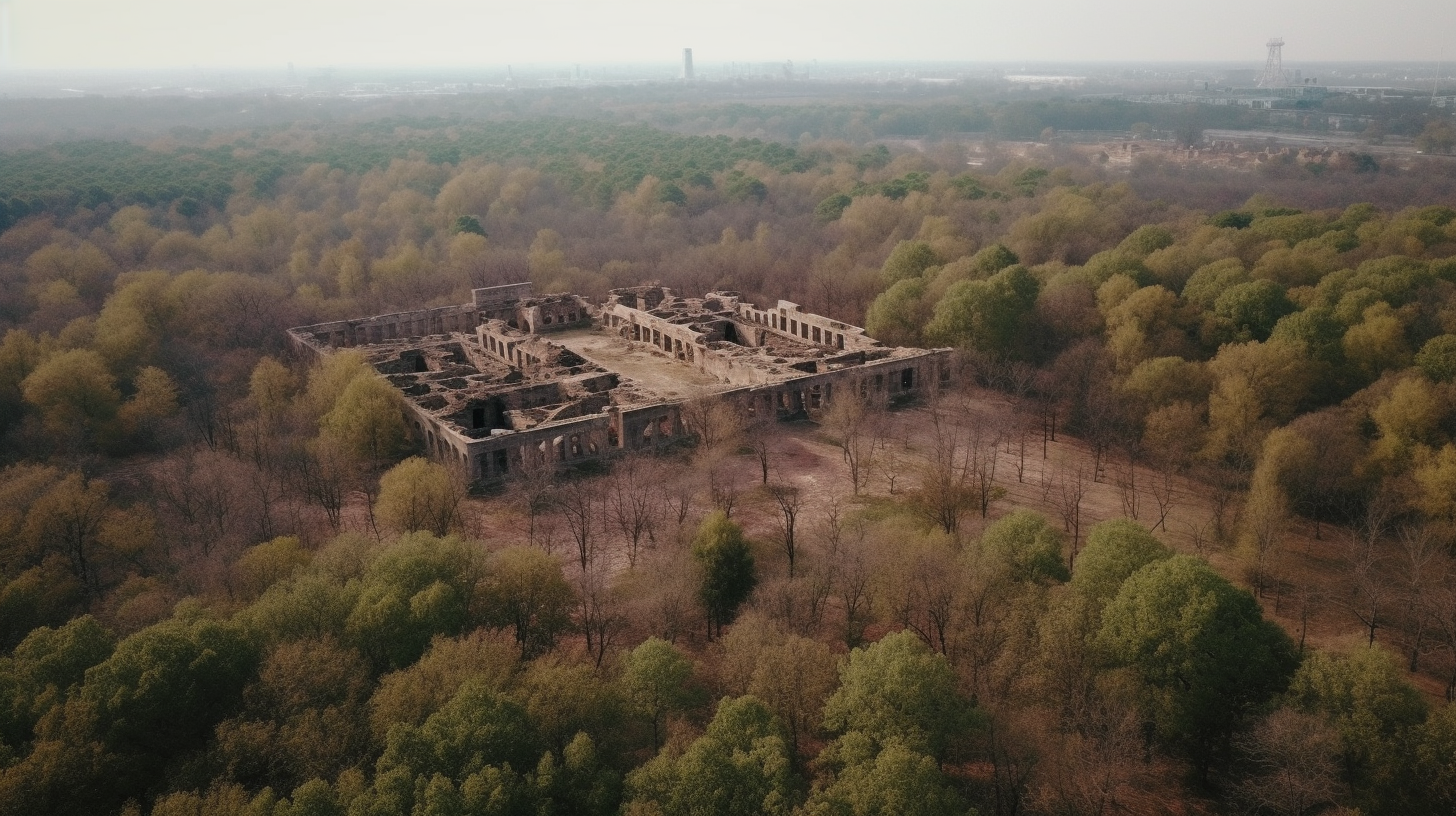Have you ever wondered if we are the first advanced civilization to exist on Earth? The idea of an ancient, technologically advanced civilization predating humanity has been a subject of fascination for centuries. The Silurian Hypothesis, a term coined by scientists Gavin Schmidt and Adam Frank, explores this possibility, challenging our understanding of Earth’s history and the development of intelligent life.
The Hypothesis and Its Origin
The Silurian Hypothesis is named after the Silurians, a fictional race of intelligent reptiles in the popular British TV series Doctor Who. The hypothesis speculates that an advanced civilization may have existed on Earth millions of years before humans, leaving behind traces in the geological record. While there is no direct evidence supporting this theory, Schmidt and Frank argue that it’s essential to consider the possibility, as it has implications for the search for extraterrestrial life and our understanding of our own civilization’s impact on the planet.

Evidence and Clues
One of the fundamental questions posed by the Silurian Hypothesis is what kind of evidence could be left behind by an ancient, technologically advanced civilization. Gavin Schmidt and Adam Frank, the authors of the original paper, argue that any direct evidence, such as buildings or machines, would likely have been destroyed or eroded over millions of years. Instead, they propose looking for indirect evidence, such as the traces of large-scale industrial activities, that might have left an imprint in the geological record.
In their research, Schmidt and Frank point out that one of the most significant markers of human industrial activity is the release of greenhouse gases, such as carbon dioxide and methane, which have led to a rapid increase in global temperatures. They suggest that a similar ancient civilization could also have produced a spike in greenhouse gas emissions that would be detectable in the geological record. This type of evidence could be found in the form of isotopic anomalies, which are unusual ratios of isotopes in the geological record.
Another potential clue is the presence of synthetic materials or compounds that would not have formed naturally. For example, plastics and other synthetic materials have become pervasive in our modern world. While these materials would likely break down over millions of years, their chemical byproducts could still be detected in the geological record.
In the paper Schmidt and Frank also consider the possibility of finding traces of agriculture or other large-scale modifications of the environment, such as deforestation. The authors suggest that evidence of extensive land use or other significant changes to the natural environment could be a sign of an advanced civilization’s activities.
Schmidt and Frank emphasize that the goal of their research is not to prove the existence of an ancient advanced civilization, but rather to demonstrate that the question is scientifically valid and worth investigating. By outlining potential evidence and exploring the implications of the Silurian Hypothesis, they hope to inspire further research and spark a broader discussion on the topic.
The Role of Popular Culture
The concept of a long-lost ancient civilization predating humanity has captured the imagination of people for centuries, inspiring countless myths, legends, and stories. The Silurian Hypothesis, while rooted in scientific inquiry, is no exception to this fascination. Popular culture has often explored the idea of ancient, technologically advanced civilizations that once ruled the Earth, only to be lost to the sands of time.
One of the most famous examples of this is the legendary lost city of Atlantis, which was first mentioned by the ancient Greek philosopher Plato in his dialogues “Timaeus” and “Critias.” According to Plato, Atlantis was a powerful and advanced civilization that existed around 9,000 years before his time, before sinking into the ocean “in a single day and night of misfortune.” While the existence of Atlantis is widely regarded as fictional, it has inspired countless books, movies, and theories about ancient civilizations that existed long before recorded history.
In science fiction, the concept of a pre-human advanced civilization has been explored in various ways. The British television series “Doctor Who” features the Silurians, a fictional species of intelligent reptiles that inhabited the Earth millions of years ago, coining the term “Silurian Hypothesis”. Similarly, H.P. Lovecraft’s Cthulhu Mythos, a shared universe of horror stories, includes ancient, advanced civilizations that predate humanity and possess technology far beyond our understanding.
Debunking Common Misconceptions
While the Silurian Hypothesis opens up the possibility of advanced civilizations predating humanity, it’s crucial to separate fact from fiction. Many theories and ideas in popular culture surrounding ancient civilizations are based on myths, exaggerations, or misunderstandings. For example, the concept of Atlantis, a technologically advanced city that vanished beneath the ocean, has been debunked by historians and archaeologists. It’s essential to approach the Silurian Hypothesis with a critical and scientific mindset, avoiding the temptation to conflate it with unverified or fantastical stories.
As intriguing as the Silurian Hypothesis may be, it faces numerous challenges and limitations. First and foremost, the lack of direct evidence makes it difficult to prove or disprove the existence of a pre-human advanced civilization. Additionally, our understanding of Earth’s geological record and the processes that shape it is still evolving, making it challenging to determine what signs of an ancient civilization would look like. Finally, the hypothesis itself is based on a speculative and theoretical framework, which means that even if evidence were to be found, it would likely be open to interpretation and debate.
The Future of the Silurian Hypothesis
Despite these challenges, the Silurian Hypothesis remains an exciting area of research and inquiry. As scientists continue to explore Earth’s geological record and develop new techniques for uncovering evidence of past civilizations, it’s possible that our understanding of the hypothesis will evolve. Moreover, as our knowledge of the universe expands and we discover more about the potential for life on other planets, the Silurian Hypothesis may serve as a valuable lens through which to view the development of intelligent life across the cosmos.
As a thought experiment and a subject of scientific inquiry, the Silurian Hypothesis has the power to challenge our perceptions of Earth’s history, the development of intelligent life, and our own civilization’s impact on the planet. Whether or not evidence of a pre-human advanced civilization is ever found, the hypothesis serves as an important reminder of our place in the universe and the responsibility we have to preserve our planet for future generations.
The Continuing Debate and Search for Evidence
While the Silurian Hypothesis remains a speculative idea, it has sparked considerable debate and discussion among scientists and the general public. Proponents of the hypothesis argue that it is worth exploring further, as it could fundamentally change our understanding of Earth’s history and the development of intelligent life. Critics, on the other hand, contend that there is currently no compelling evidence to support the existence of a pre-human advanced civilization and that the hypothesis is more akin to pseudoscience.
Despite the controversy surrounding the Silurian Hypothesis, the search for evidence of ancient civilizations continues. Archaeologists, geologists, and other scientists are constantly uncovering new information about Earth’s past, and with each new discovery, our understanding of the planet’s history evolves. As our knowledge grows, the possibility of finding definitive evidence for or against the Silurian Hypothesis remains an open question, fueling ongoing debate and speculation about the origins of intelligent life on Earth.
Lessons for Modern Civilization
Regardless of whether an ancient, advanced civilization once existed on Earth, the Silurian Hypothesis offers valuable lessons for modern society. By considering the possibility that an intelligent species could have risen and fallen before us, we are reminded of the fragility of our own civilization and the importance of preserving our planet for future generations. The hypothesis also raises questions about the sustainability of our current way of life and the long-term consequences of our actions on Earth’s environment. As we continue to grapple with the challenges of climate change, resource depletion, and environmental degradation, the Silurian Hypothesis serves as a stark reminder of the need to be mindful of our impact on the planet.
Implications for the Search for Intelligent Life on Other Planets
The Silurian Hypothesis not only has the potential to reshape our understanding of Earth’s history, but it could also impact the way we search for intelligent life on other planets. By examining the possibility that advanced civilizations could have existed on Earth before humanity, we may gain insights into the various forms intelligent life could take and the different ways it might evolve. This knowledge could help us refine our search for extraterrestrial life, as well as better understand the factors that contribute to the development of intelligent life throughout the universe.
The Ongoing Discussion and Its Implications
The Silurian Hypothesis, though still speculative and unproven, offers an intriguing perspective on the possibility of advanced civilizations predating humanity. By exploring this hypothesis, we not only challenge our understanding of Earth’s history but also gain valuable insights into the development of intelligent life and the potential for extraterrestrial civilizations. Moreover, the hypothesis serves as a cautionary tale for modern society, reminding us of the importance of preserving our planet and ensuring a sustainable future for generations to come.
Further Reading and Resources
For those interested in delving deeper into the Silurian Hypothesis and its implications, the following resources offer a comprehensive look at the topic, providing more in-depth information and analysis:
The original paper by Gavin Schmidt and Adam Frank – This is the research paper that introduced the Silurian Hypothesis and sparked the ongoing discussion among scientists and the general public.
The Atlantic’s coverage of the Silurian Hypothesis – This article provides an overview of the hypothesis and its potential implications, as well as reactions from the scientific community.
Scientific American’s exploration of the Silurian Hypothesis – This article delves into the potential evidence for a pre-human civilization and discusses the challenges in proving or disproving the hypothesis.
BBC’s analysis of the Silurian Hypothesis and its implications – This piece explores the broader implications of the Silurian Hypothesis for our understanding of the development of intelligent life and the potential for extraterrestrial civilizations.




